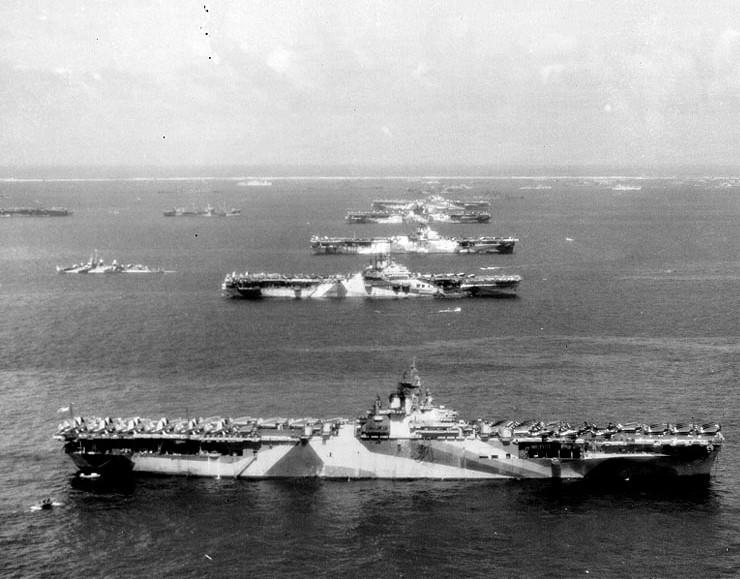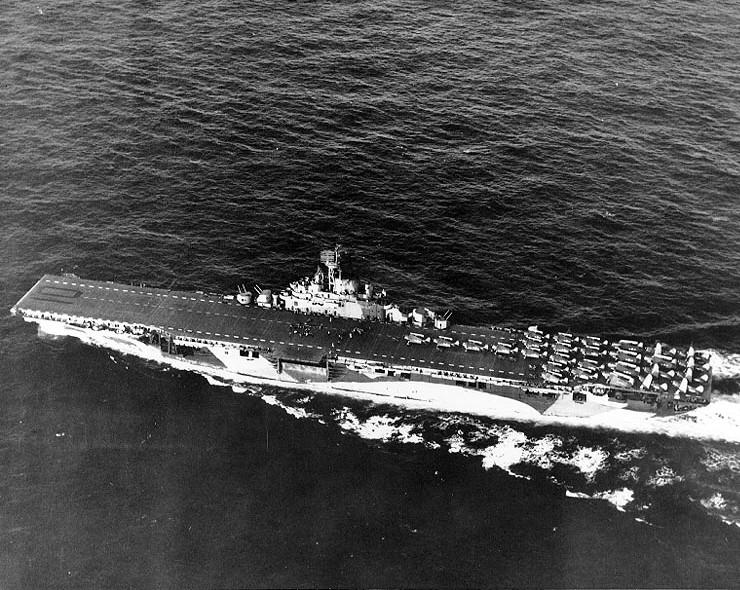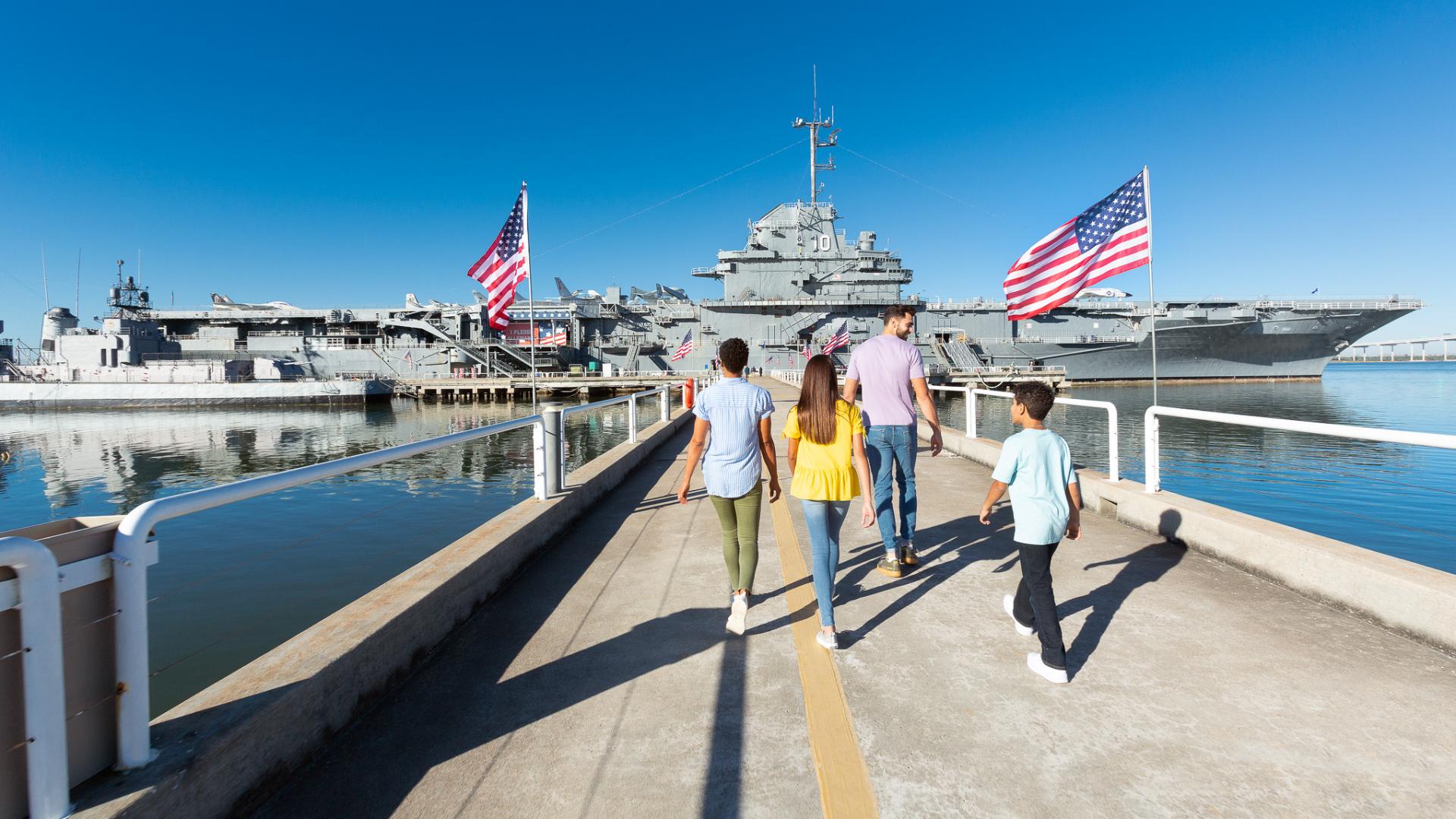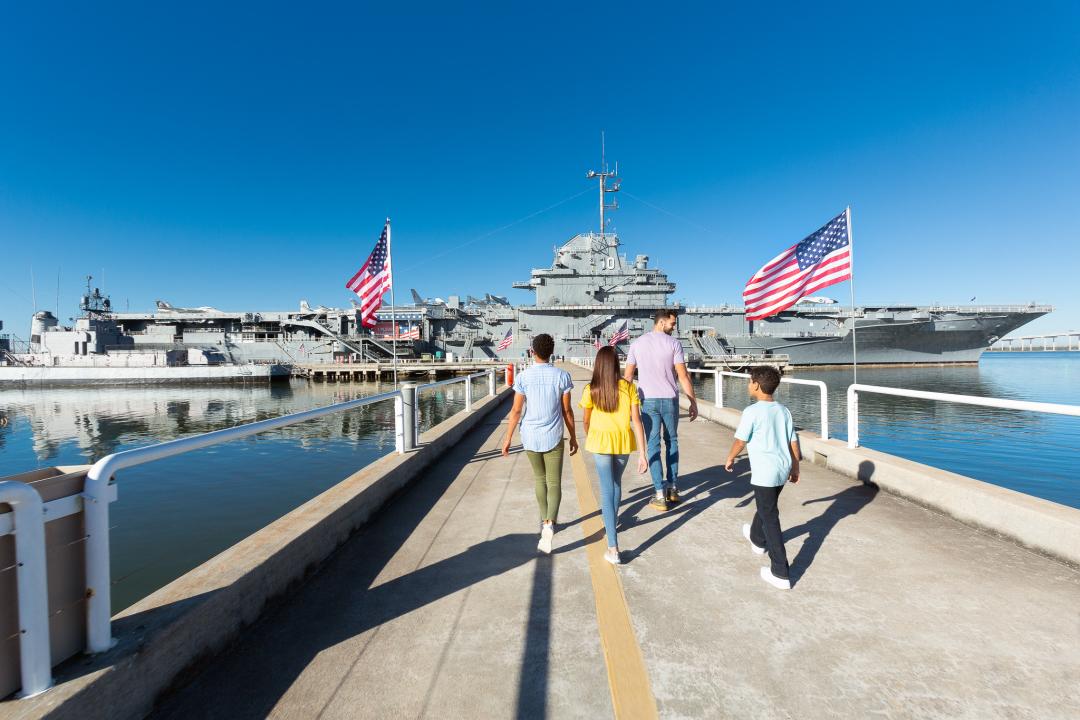A long time ago A million years BC The best things in life Were absolutely free...
- Arthur Johnson and Johnny Burke 1936
Six days prior to the "Date of Infamy," shipyard workers at Newport News Shipbuilding in Newport News, Virginia, gathered to lay the keel of a new warship. Originally this was to be the aircraft carrier "Bon Homme Richard", but she would be renamed in 1942 to "Yorktown." Her class of warships would be know as the Essex aircraft carrier class. It had only been seventy nine years since the first two great iron warships, USS Monitor and CSS Virginia, fought each other to a standoff within sight of Newport News. Now, much as the United States Navy depended upon her ironclads for victory in the Civil War, so the Essex class carriers would provide the naval muscle needed to win the war in the Pacific against the Imperial Japanese Navy. The picture below was originally captioned, "Murderers' Row," after the destruction of the Japanese navy by American naval forces at the battle of the Philippine Sea in June 1944 and Leyte Gulf in October 1944 .

USS Yorktown (CV-10) would be the second of thirty-two Essex class carriers ordered, but only twenty-four would enter service in the United States Navy between 1942 and 1950. In the mid 1950's fourteen would be modernized to accommodate jet aircraft.

Unlike the popular 1936 song and Bing Crosby movie Pennies from Heaven, aircraft carriers would cost a great deal more than "pennies from heaven." I recently queried the folks at (now) Northrop Grumman Shipbuilding in Newport News, Virginia and here is what they came up with...
The original contract called for Essex class carriers to be constructed at the $40 million mark, but after many improvements and upgrades made during the hectic days of the war the price was closer to $70-78 million per carrier. Considering the record our carriers compiled in World War II, I'd say the country made a very wise investment in these ships which would continue to serve our nation for many years...
If you want the things you love You must have showers. So when you hear it thunder Don't run under a tree. There'll be pennies from heaven for you and me.

